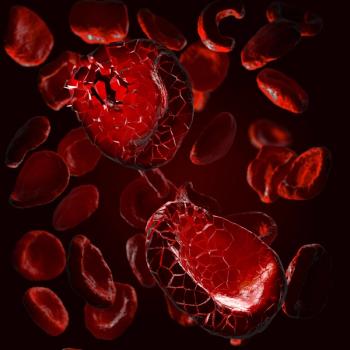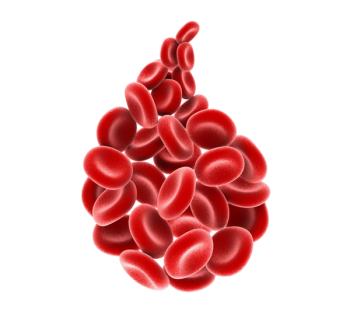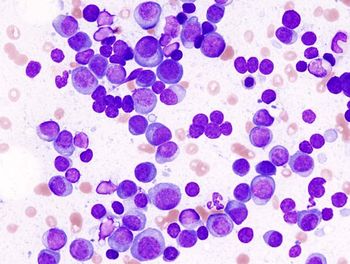
Oncology NEWS International
- Oncology NEWS International Vol 10 No 11
- Volume 10
- Issue 11
Digital vs Film Mammography Trial Begins
BETHESDA, Maryland-The first large, multicenter study to compare digital vs standard film mammography has begun enrolling patients. The Digital Mammographic Imaging Screening Trial (DMIST) will study 49,500 women at 18 centers in the United States and one center in Canada.
BETHESDA, MarylandThe first large, multicenter study to compare digital vs standard film mammography has begun enrolling patients. The Digital Mammographic Imaging Screening Trial (DMIST) will study 49,500 women at 18 centers in the United States and one center in Canada.
"We want to make sure digital mammography is at least as good as standard mammography at finding early breast cancer," said principal investigator Etta D. Pisano, MD, professor of radiology, University of North Carolina, Chapel Hill. "We expect there will be an advantage, but none of the early studies has shown a real benefit of digital over film."
The American College of Radiology Imaging Network, a National Cancer Institute-supported clinical trials group, will conduct the $26.3 million study. Women will be enrolled at the time of their regular screening mammogram. Researchers expect to complete patient accrual in 18 months, and participants will be followed for at least 1 year.
Each woman will receive a two-view digital mammogram and a two-view film mammogram of each breast. Each of the two screenings will be interpreted independently, and patients will undergo workups based on abnormal findings from either exam. One year later, researchers will repeat the screenings using the same protocol.
"Truth regarding breast cancer status for all patients will be determined either through the results of breast biopsy, if that occurs, or as a result of 1 year of follow-up without clinical evidence of disease," NCI said. "All pathologic specimens will be reread by an expert breast pathologist."
The radiation dose will be the same for both digital and standard mammograms in the study. "We can certainly get the same information out of a digital mammogram at a lower dose than film, but we might be able to get more information at a higher dose," Dr. Pisano said.
In addition to the primary endpoint of efficacy, researchers will seek to determine the effect of breast density on the diagnostic accuracy of digital mammography. Other secondary objectives of DMIST include:
- Determining the effects of patient characteristics (such as age, lesion type, pathologic diagnosis, hormonal status, and family history) on the diagnostic accuracy of digital mammography.
- Assessing the effect of the reduced false-positive tests that are expected with digital mammography on participants’ health-related quality of life and personal anxiety.
- Comparing the diagnostic accuracy of soft copy vs printed film display for digital mammography.
- Comparing the image quality and breast radiation dose in digital vs screen-film mammography.
- Determining the temporal variations in image quality, breast radiation dose, and other quality-control parameters in the participating study centers.
To be eligible for DMIST, a woman must be asymptomatic with no focal dominant lump, no bloody or clear nipple discharge, and no implants. Women of any age may participate.
Quality-of-Life Assessment
The first 800 women enrolled will undergo a quality-of-life assessment prior to their screenings. In addition, 600 women with positive screening results and 600 with negative findings will be assessed shortly after their mammograms. All of these women will be reassessed at the time of their 1-year follow-up.
As part of DMIST, researchers will use and compare results from four different digital mammography systemsthose made by GE Medical Systems, Fuji Medical Systems, Fischer Imaging, and LORAD. Only the GE system has received marketing approval from the Food and Drug Administration.
Articles in this issue
about 24 years ago
Two Large AIDS Studies Will Increase Enrollments 60%about 24 years ago
Gene Therapy Plus Radiotherapy Delays Esophageal Cancer Growth in Miceabout 24 years ago
Platinum-Based Regimens Are Favored in Advanced NSCLCabout 24 years ago
Radiofrequency Ablation Proving Effective in Small Renal Cell Tumorsabout 24 years ago
Templates Used to Document Chemotherapyabout 24 years ago
Grade Dictates Treatment of Primary NHL of the Breastabout 24 years ago
Low Arsenic Levels in Drinking Water Increase Cancer Riskabout 24 years ago
Astatine-211-Labeled MoAB Promising in Brain Cancer Patientsabout 24 years ago
GEMOX Active With Low Toxicity in Pancreatic Cancerabout 24 years ago
Legislation Urged to Revitalize the National Cancer PlanNewsletter
Stay up to date on recent advances in the multidisciplinary approach to cancer.

















































































